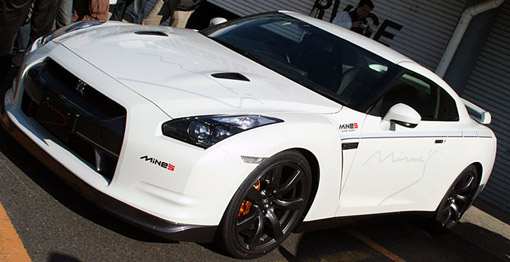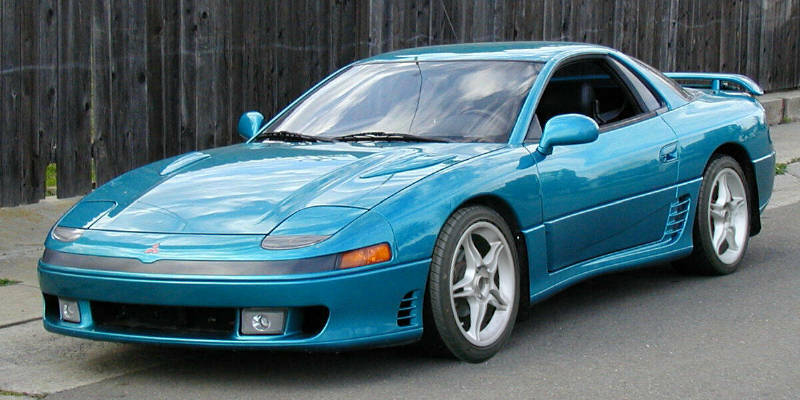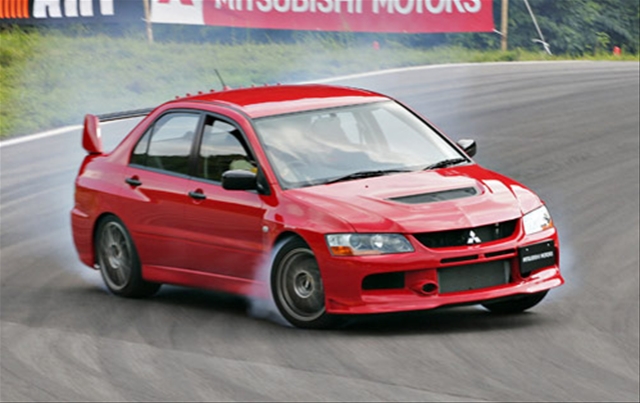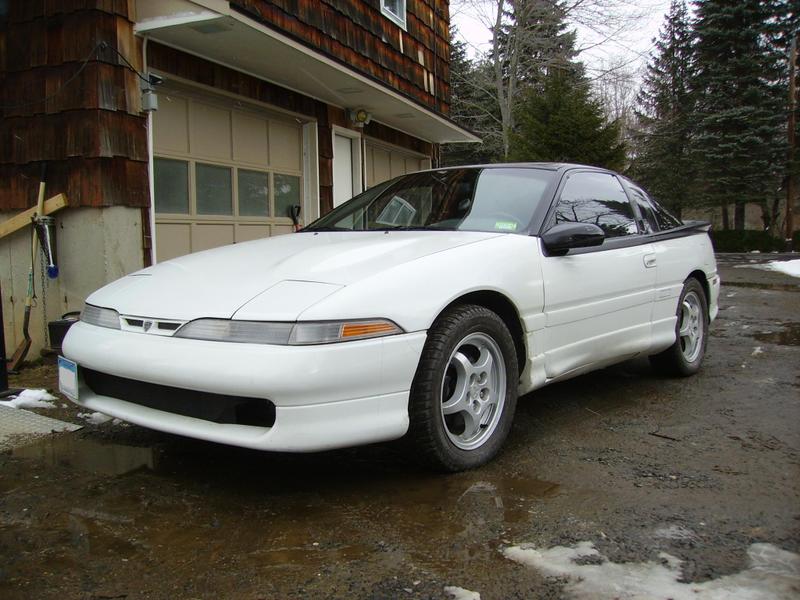The Nissan Skyline is a mid-size car originally produced by the Japanese automaker Prince Motor Company starting in 1957 and later by Nissan after the two companies merged in 1966. It is available in either coupé, or sedan or wagon body styles. The current Skyline is sold in North America, South Korea, Taiwan, and the Middle East as the Infiniti G37. Although there are many different Skylines, I will only talk about the R32, R33, R34 and the GTR.
R32
The HCR32 Skyline debuted in May 1989. It was available as either a 2-door coupe or 4-door hardtop sedan, all other bodystyles were dropped. The R32 featured several versions of the RB-series straight-6 engines, which had improved heads (the twelve port inlet was gone) and used the ECCS (Electronically Concentrated Control System) injection system. Also available were an 1,800 cc 4 cylinder GXi model. Most models had HICAS four-wheel steering, with the rear wheels being hydraulically linked to the front steering. The 2.5 litre version became one of the first cars made in Japan to feature a 5-speed automatic transmission. The GTS-t Type M included larger five-stud 16 inch wheels, four piston front callipers and twin piston rears. ABS was optional (except for the GT-R), viscous LSD was standard on all turbo models and optional on all but the GXi. Nissan also produced 100 Australian models of the R32.
R32 GT-R
The GT-R returned with twin ceramic turbochargers, all-wheel steering, electronically controlled all wheel drive, and 280 hp (206 kW) at 6800 rpm.[8] The RB26DETT engine actually produced ~320 hp, but it was unstated due to the Japanese car makers' "gentlemen's agreement" not to exceed 206 kW (276 hp). The engine was designed for ~500 hp in racing trim, and then muzzled by the exhaust, boost restriction, and ECU. The electronic boost control had a small physical restriction in the control lines. It was marked in yellow so the new owner could remove it and enjoy a safe factory boost increase. After this increase the car would put out ~230 kW and could do 0-100 km/h in 4.7seconds and quarter mile in 12.8 seconds.
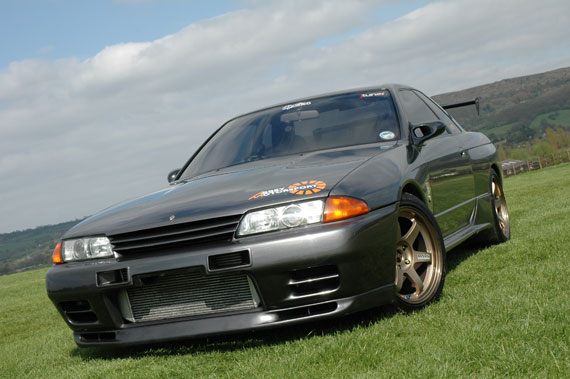
R33
The R33 Skyline was introduced in August 1993. Slightly heavier than the R32, it is available in coupe and sedan bodystyles. All models now used a 6-cylinder engine. Nissan took the unusual step of down-grading the GTS model to have only the RB20E, while the twin-cam of the R32 GTS was discontinued along with the 2.0 L turbo RB20DET.
R33 Series 2
The R33 Skyline (Series 2) continued the concepts introduced in the R32. Driver and Passenger airbags became standard in 1996. As a result, pre-1996 models are barred from being imported into various countries for consumer road use as they do not meet the frontal impact standards. For the RB25DET engine the ignition system was also changed, with the ignition module no longer located on the cam covers and was instead replaced by smart ignition coils (Ignitor built into coil) and ECU. The RB25DET turbo was also given a nylon compressor wheel. Throughout the time the R33 was produced there were quite a number of different styled lights and bodykits fitted, the actual body/chassis underwent no changes. Among the cosmetic changes in the series 2 were, the headlights which tapered down more towards the grill and were fitted with improved reflectors, the grill (which was longer on the Series 1), the bonnet which had a re-shaped leading edge to fit the new lights and front bumper changing shape in the smallest amount to match the lower edge of the new headlights. Later models of the Series 2 also had the option of having an Active-LSD fitted. The R33 ceased production in March 1998 with the 40th Anniversary R33 Series 2...
R33 GT-R
The BCNR33 GT-R version also had the same RB26DETT engine that the BNR32 was equipped with, although torque had been improved, due to changes in the turbo compressor aerodynamics, turbo dump pipe, and intercooler. The turbo core changed from a sleeve bearing to a ball bearing, but the turbine itself remained ceramic, except on N1 turbos (steel turbine, sleeve bearing). From the R33 onward, all GT-Rs received Brembo brakes. In 1995 the GT-R received an improved version of the RB26DETT, the ATTESA-ETS all wheel drive system, and Super HICAS all-wheel steering.

R34
In May 1998, the HR/ER/BNR34 addressed many of the concerns over the change from the R32 to the R33, with more emphasis on sportiness, and marked the introduction of the more fuel-efficient and environmentally-friendly RB25DET NEO engine. The RB20E engine was discontinued in the R34 base model (GT), and the RB20DE, after last being used in the R32 Skyline, was reintroduced in updated NEO guise. The R34 GT powered by the RB20DE NEO, coupled with a 5-speed gearbox, became the most fuel-efficient straight-6 Skyline to date (of any shape). It was not the most fuel-efficient straight-6 of its time though; the 1998 Toyota Supra had better reported fuel economy. The 5-speed automatic transmission available on some models in the previous two shapes were discontinued. In its place, Nissan produced a 4-speed Tiptronic transmission for all of the automatic versions.
R34 GT-R
The GT-R reappeared in 1999, with a revised chassis and other updates. The R34 turbos received a ball bearing core. The R34 N1 turbos had a metal exhaust wheel, and ball bearing center section. A 6-speed Getrag gearbox was used. The turbo outlet pipes were changed from cast to formed metal outlets. The intercooler had a temperature probe in the V-spec models.
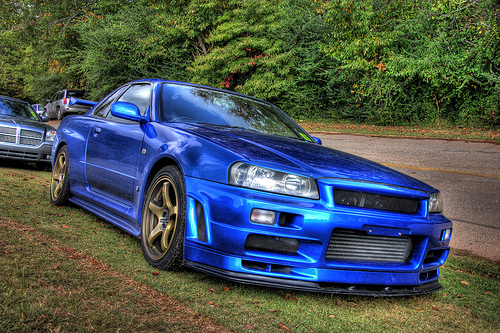
R35 GT-R
The Nissan GT-R is powered by the VR38DETT engine, a 3,799 cc (3.8 L; 231.8 cu in) DOHC V6. Two parallel Ishikawajima-Harima Heavy Industries (IHI) turbochargers provide forced induction. Production vehicles produce a manufacturer-claimed engine output of 480 bhp (360 kW) at 6400 rpm and 434 lb·ft (588 N·m) at 3200-5200 rpm. According to independent dynamometer tests, the GT-R produces 416 hp (310 kW) to 475 hp (354 kW) and 414 lb·ft (561 N·m) to 457 lb·ft (620 N·m) at the wheels. The engine also meets California Ultra Low Emissions Vehicle (ULEV) standards. A curb weight of 1,730 kg (3,800 lb) or 1,736 kg (3,830 lb) with side curtain airbags is achieved using a jig welded steel chassis with aluminum used for the hood, trunk, and doors. A rear mounted 6 speed dual clutch semi-automatic transmission is used in conjunction with the ATTESA E-TS system to provide power to all four wheels and along with Nissan's Vehicle Dynamics Control (VDC-R) aids in handling and stability. Three shift modes can also be selected for various conditions. The drag coefficient is 0.27.
